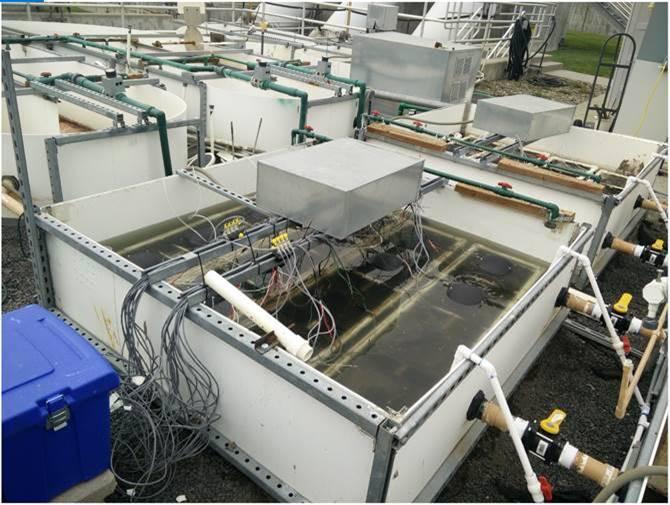
Credit: WSU
WSU researchers have developed a sustainable wastewater treatment system that relies on electron-producing microbial communities to clean the water.
The work could someday lead to reduced reliance on the energy-intensive processes that are used to move and treat wastewater, which accounts for as much as two percent of the total electrical energy consumption in the United States.
Led by Abdelrhman Mohamed, postdoctoral research associate, and Haluk Beyenal, Paul Hohenschuh Distinguished Professor in the Gene and Linda Voiland School of Chemical Engineering and Bioengineering, the researchers report on their work in the journal, Bioelectrochemistry.
In wastewater treatment, aeration is an energy intensive and necessary procedure to remove contaminants. Pumps work continuously to mix air into water, adding oxygen that bacteria then use to oxidize organic matter and contaminants. In their work, the researchers used a unique microbial fuel cell system they developed as a substitute for external aeration.
“If we cut the energy use even by a small percentage in the U.S., that is billions of dollars in annual costs,” said Mohamed. “Energy costs are one part but that also means reducing environmental emissions, too.”
Microbial fuel cells work by having microbes convert chemical energy to electricity in a manner that is similar to a battery. They don’t generate a lot of electricity, so they have been used in low-power applications especially in remote areas where batteries are not feasible.
In the case of wastewater treatment, the microbial fuel cell can fill the role that aeration and oxygen plays – accepting electrons that bacteria generate as a product of their metabolic work.
In addition to substituting for the oxygen, the system can also generate a small amount of electricity, which can be used to do additional aeration.
“We tried to think about it in two steps,” said Mohamed. “We lower the energy costs because you don’t have to aerate and add oxygen, but the second part is we generate a little power that we can use for some useful applications in the wastewater treatment plant itself.”
“It’s like we’re double dipping,” added Beyenal. “We use the electrodes and then the electron acceptor to promote microbial growth. On the other hand, we gain a little bit of electricity for the pump and to aerate. With this approach it is more powerful and can treat the wastewater faster.”
The fuel cells have been used experimentally in wastewater treatment systems under ideal conditions, but under real-world and varying conditions, they often fail.
“The microbial fuel cells lack internal regulation controlling the potential of anodes and cathodes, and thus cell potential,” said Mohamed. “This can cause system failure.”
In the system the WSU team developed, the researchers added an extra electrode that allows additional control to their fuel cell system. The system is switchable. It can either work by itself as a microbial fuel cell, using no energy as it slowly cleans up waste, or it can be switched to one that uses a smaller amount of energy than aeration and that cleans more intensively. Mohamed invented a cheap portable electronic device that controls the electrodes.
The researchers were able to operate their system for a year in the laboratory without failure as well as at the pilot scale at a test wastewater treatment facility in Moscow, Idaho. The pilot scale treatment facility is owned and operated by University of Idaho Environmental Engineering Professor Erik R. Coats, who was a collaborator on the project. The system removed waste at comparable rates to aeration.
The system could potentially be used entirely independently from the power grid, and the researchers hope it could someday be used for small scale wastewater treatment facilities, such as for clean up around cattle operations or in very rural areas.
“Over time, we have made a lot of progress,” said Mohamed, who first became interested in microbial fuel cells as an undergraduate at WSU. “There are still challenges that we need to overcome to see this as a real application, but it’s exciting to see the field moving significantly over a period of time.”
“These are difficult systems to build,” added Beyenal. “I think everything is so easy when I write the proposal, but this takes a lot of time and a lot of new discovery. There is nothing like this on the market.”
###
The work was funded by the Office of Naval Research.
Media Contact
Abdelrhman Mohamed
[email protected]
Original Source
https:/
Related Journal Article
http://dx.




